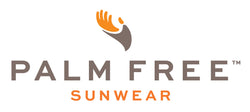Sun Protective Clothing Tips for Chemotherapy Patients
 Due to better diagnostic techniques and longevity in the US, many people are being diagnosed with cancer early, undergoing treatment, and surviving longer. While there still is no cure for all cancers, some treatments do cure and some reduce the progression. Several of these treatments may cause your skin to be highly sun sensitive.
Due to better diagnostic techniques and longevity in the US, many people are being diagnosed with cancer early, undergoing treatment, and surviving longer. While there still is no cure for all cancers, some treatments do cure and some reduce the progression. Several of these treatments may cause your skin to be highly sun sensitive.
While undergoing systemic chemotherapy, or using topical chemotherapeutic creams for precancers and non-melanoma skin cancers, the best way to reduce sun sensitivity is do your best to avoid the sun, however this is not always practical. Being outside enjoying nature can be irresistible.
Sun protective clothing is a start and is a lot easier that you may think. This simple guide will help you make sun protective decisions in your daily wear while undergoing chemotherapy.
If you don’t have UPF 30+ labeled clothing, not to worry, you probably have appropriate clothing in your closet or you can purchase adequate clothing at a resale store for half the price of manufactured UPF clothing.
This is what to look for:
- Is it tightly knitted or tightly woven?
- Knit fabric stretches, woven fabric only stretches when you pull at it diagonally. Examples are aerobic work out shirts and yoga pants, they are usually knit, jeans and men’s dress shirts are usually woven.
- Look at the fabric yarn (threads) and see how tight the knit or weave is. If you can see space through the intertwined yarns this is not a good sun protective choice. Tighter (fibers closer together) is better.


- Does light pass through easily?
- Hold the fabric up to a light and see how much light passes. If light brightness passes through easily, the fabric may be too thin or sheer, however, you can layer with another piece of clothing to decrease the passage of light. The more opaque the better.


- What color is the fabric?
- Counter intuitively darker is better. Have you ever seen the white skin of those teenage Goth trendsetters??!! They are smarter than you think. Dark clothing provides better sun protection.


Reducing the undesired of effects of chemotherapy helps one to maintain their quality of life and these simple measures can help protect chemo patients from something that many of us take for granted: enjoying being outside in the sun.

And don’t forget a wide-brim hat for the face and sun protective gloves for the hands; these are the most sun exposed areas of our bodies.

San Diego Hat Company provides nice and affordable sun hats.
In fact, if you are currently undergoing chemotherapy and would like a pair of the PalmFree™SunGloves, please use the coupon code ‘JFBLives’ for a 10% discount. In honor of my dear and beautiful friend Joan who is in the battle of her life.
I wish you well throughout your treatment and life long!
http://www.breastcancer.org/tips/ask_expert/2005_06/question_02




